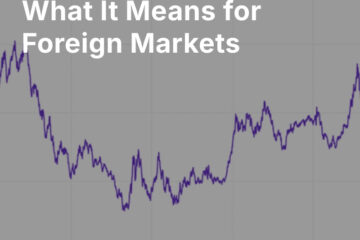Investment Summary
U.S. stock market earnings and growth prospects remain positive. The U.S. market is having a normal correction, and we will use this opportunity to spend some of the cash we have raised to buy stocks at a discount.
The U.S. trailing P/E as of December 31, 2013 was about 16 times earnings if you include fourth-quarter earnings growth of 6 to 7 percent. Thus far, reported fourth-quarter earnings fall into that range. Now that the year is over, we will see that the U.S. had earnings growth in 2013 that was far better than the pessimists had expected. As regular readers know, we are bullish on corporate profits for 2014 as well. We anticipate that U.S. profits will rise by 10+ percent this year.
U.S. Corporate Profits: Continuing to Rise From Recession’s Depths
Jan 2009 = 100 Data Source: Federal Reserve Bank of St Louis 
We disagree with people who say that the U.S. market is grossly overvalued. After the correction of 4.3 percent that took place at the end of last week and early this week, the U.S. market is selling at about 15 times expected earnings — and that is in the mid-range of market valuations over the last several decades. While stocks are not cheap, they are far from overpriced. Before the current bull market ends, we expect U.S. stocks to sell for 20 times earnings. That, however, will not take place for a few more years.
Emerging Markets
Emerging markets (which are currently not recommended) will continue to be under pressure for the foreseeable future. Most emerging markets make money by exporting to the developed world, and their number one customer, Europe, is only growing slowly. Customer number four, Japan, is barely growing, and with a declining Yen, they will import less. Their second biggest customer is China, which is a big importer of raw materials. China will import for the first half of 2014, and draw down inventories in the second half, so no big profit growth here. Importer number three is the U.S., which will increase imports slightly. This is only enough to encourage a modest expansion of profits in those emerging markets like Brazil, Russia, and
the south and east Asian economies which need to export either commodities or manufactured goods to grow.
The current emerging market correction is partially a reaction to the collapsing currencies in some terribly mismanaged countries like Argentina, Venezuela, and Turkey. These currencies have long been overvalued, and are now starting to reflect the overvaluation. These countries have for years been printing money to inflate their way out of debt problems; the final result of over-printing is a currency collapse, and voilà — here it is. The currency overvaluation is not an ME wide problem, but is restricted to a few countries where demagogues have tried to buy votes with populist programs and money printing.
There is one other fear causing the current emerging market declines: an unwarranted fear of a collapse of China’s banking system. Most of this fear is due to an incorrect understanding by many market participants about how the Chinese banking system actually works.
Some investors are worried about the shadow banks hurting the overall Chinese economy. Currently, that is just a potential risk… Someday it may be a more realistic risk. The Chinese leadership is trying to stop the growth of the Chinese shadow banking system, which has become a haven for corrupt politicians, crooks, and speculators. The Chinese banking system will not fail, and historically the Chinese government has pulled out all stops to keep it strong. If the shadow banking system is successfully reined in, the Chinese economy will be OK. If shadow banking gets too big, problems could arise in the future.
The U.S.
U.S. industrial production was up in the fourth quarter of 2013 and for the year as a whole to 3.7 percent — the best since 2010. Manufacturing output climbed for the fifth straight month and capacity utilization of the nation’s factories rose to 79.2 percent — the highest since 2008. All positive data points — and all support our argument for stronger industrial production, capital spending, and GDP growth in 2014. When industrial capacity utilization gets to about 86 percent, it is getting to the point where companies will need to expand their factories to grow. Seeing this ahead, corporations are spending more and growing more, and we are happy to be along for the ride.
U.S. job openings available but unfilled topped four million for the first time since 2008 in November 2013. The Job Openings and Labor Turnover Survey (or “JOLTS”) for November was positive. Job quits continued to climb, hires edged up, and layoffs hit a fresh low. Quits only occur when employees are confident that they can find a better job. All of the above data make us bullish on the outlook for the U.S. economy in 2014. Clearly, the months of December and January will have less than stellar data due to unseasonably cold weather — which will slow construction hiring and some other seasonal hiring in parts of the U.S. However, the underlying data are as bullish as they have been in years, and we should be aware that once the unseasonal cold stops, there will
be good GDP growth.
The current stock market correction is normal and will be over within a few weeks. We are confident that after the correction, the U.S. market will have a good year, as corporate profits and positive economic news are on the horizon. The only negatives are potential events occurring abroad: war in the mid-east, or possibly a banking crisis in Europe or the emerging world. In our opinion, the odds favor the U.S. market reverting to its regular pattern of climbing a wall of worry once again in 2014.
Europe
Europe, like the U.S., will be volatile in 2014, but should trend higher as the year progresses. We recommend buying when corrections occur.

